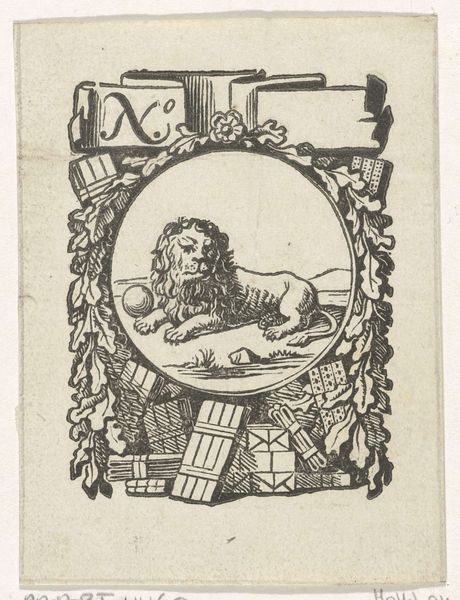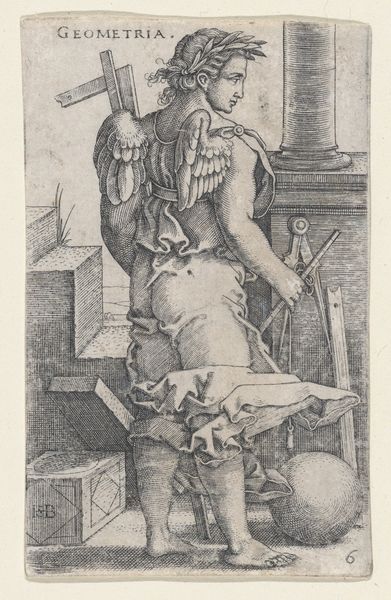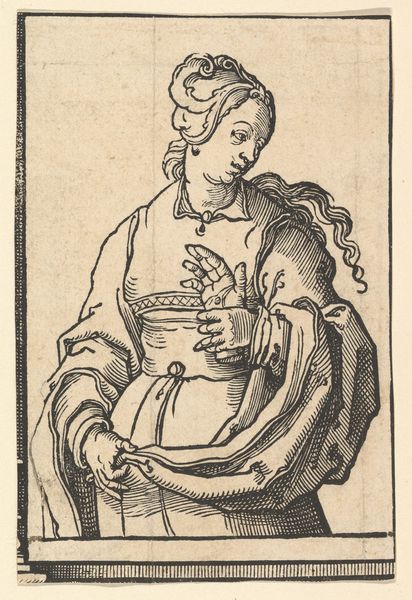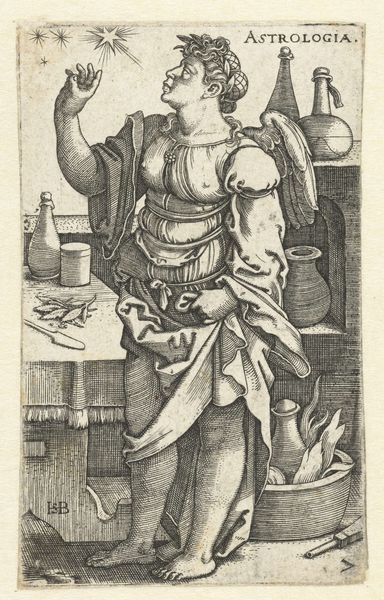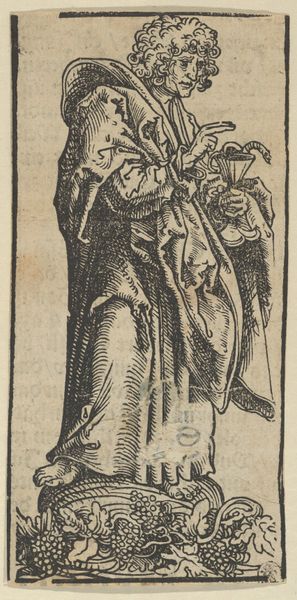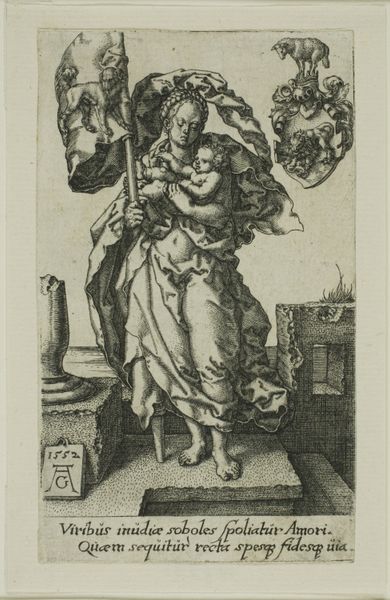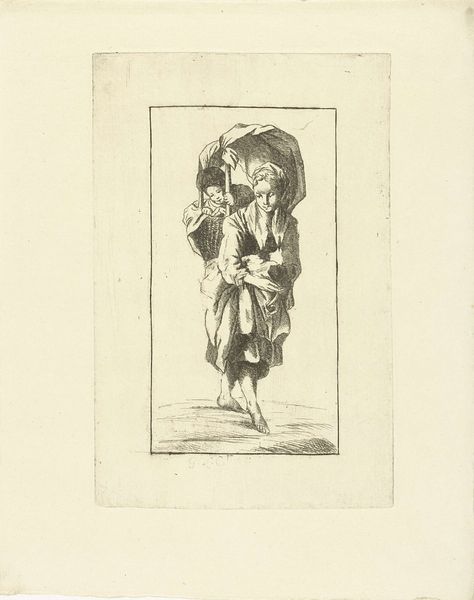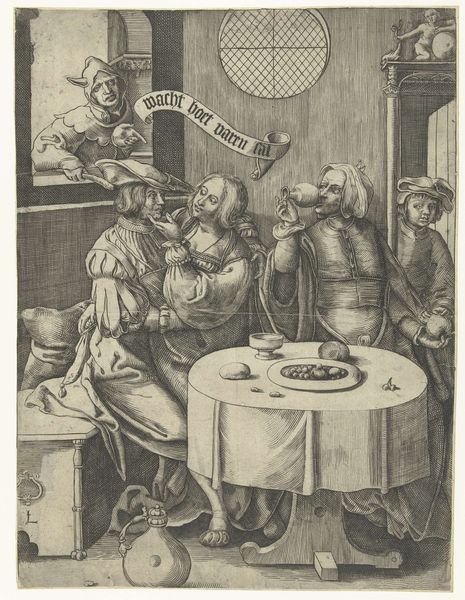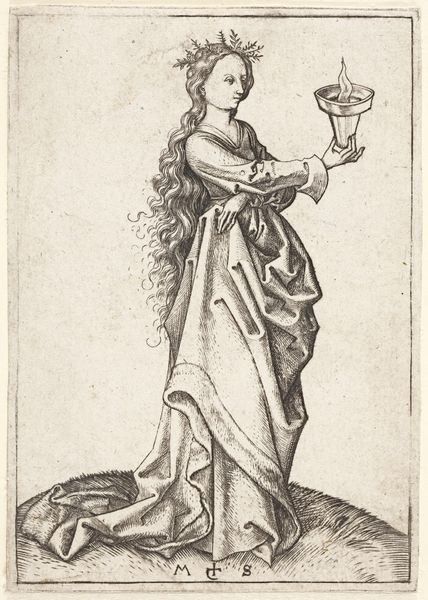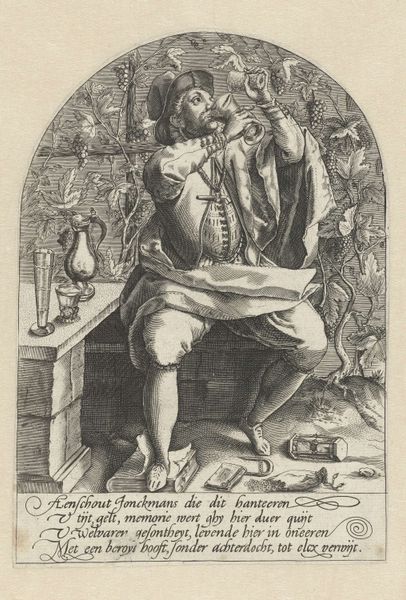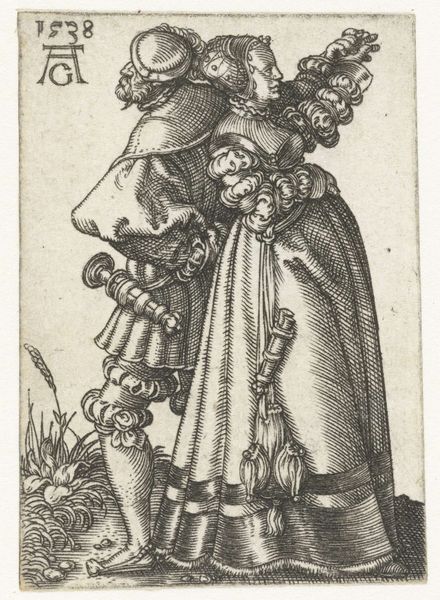
print, etching
#
portrait
#
narrative-art
#
baroque
# print
#
etching
#
figuration
#
genre-painting
Dimensions: height 86 mm, width 56 mm
Copyright: Rijks Museum: Open Domain
Editor: This is "Nar met wijnkruik en drinkglas," made sometime between 1694 and 1751 by Frans Decker. It's an etching, and I find it intriguing how such a small print can evoke a complex character, like a stage performer frozen in a moment of revelry. What stories do you think it whispers from its historical context? Curator: Well, this piece offers a fascinating glimpse into the socio-cultural role of the jester, or ‘Nar,’ within Dutch society during the late 17th and early 18th centuries. Consider the performance of identity. The jester, through costume and action, was licensed to critique power, albeit within certain constraints. Editor: Licensed critique – interesting. But what about the drinking? Was that part of the job description? Curator: It speaks to a culture of convivial gatherings and perhaps a tolerated, even expected, level of public inebriation. The figure's clothing is also quite fascinating, do you notice the face printed onto it? It is an echo within an echo, calling into question how the Jester uses humour as his own mask of identity. Do you think it reinforces or undermines his authority, if any? Editor: It’s like a commentary on being observed and judged, but from the costume itself! Maybe it points to the performative nature of identity, even for the jester. It almost feels subversive. Curator: Precisely. Decker’s etching invites us to reflect on the constructed nature of social roles and the delicate balance between amusement and social commentary within the Baroque era. We can ask: was it a true image of societal joy, or a carefully structured tool for reflecting on it. Editor: This was great, understanding this etching through the lens of its cultural context really helped unpack its layers! Curator: Indeed. It highlights how art reflects and shapes societal norms and power dynamics, doesn't it?
Comments
No comments
Be the first to comment and join the conversation on the ultimate creative platform.


